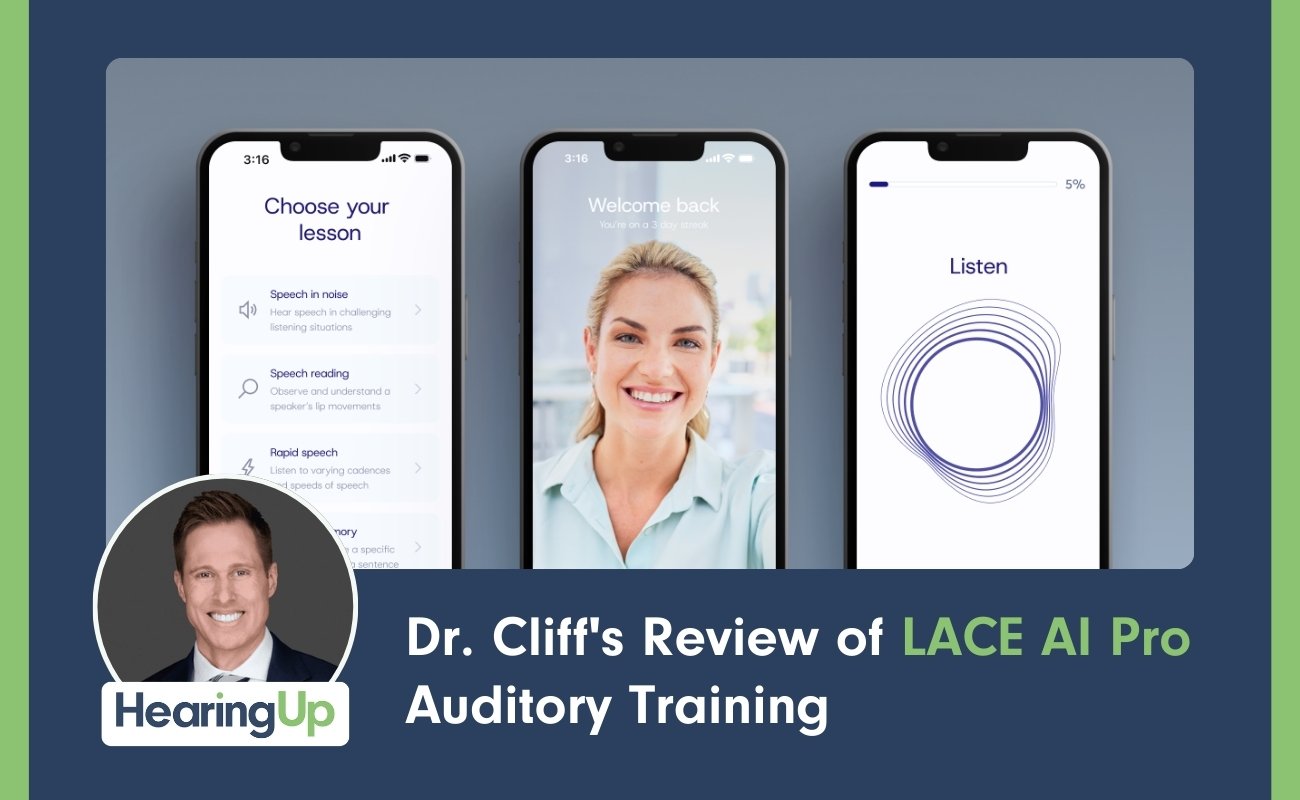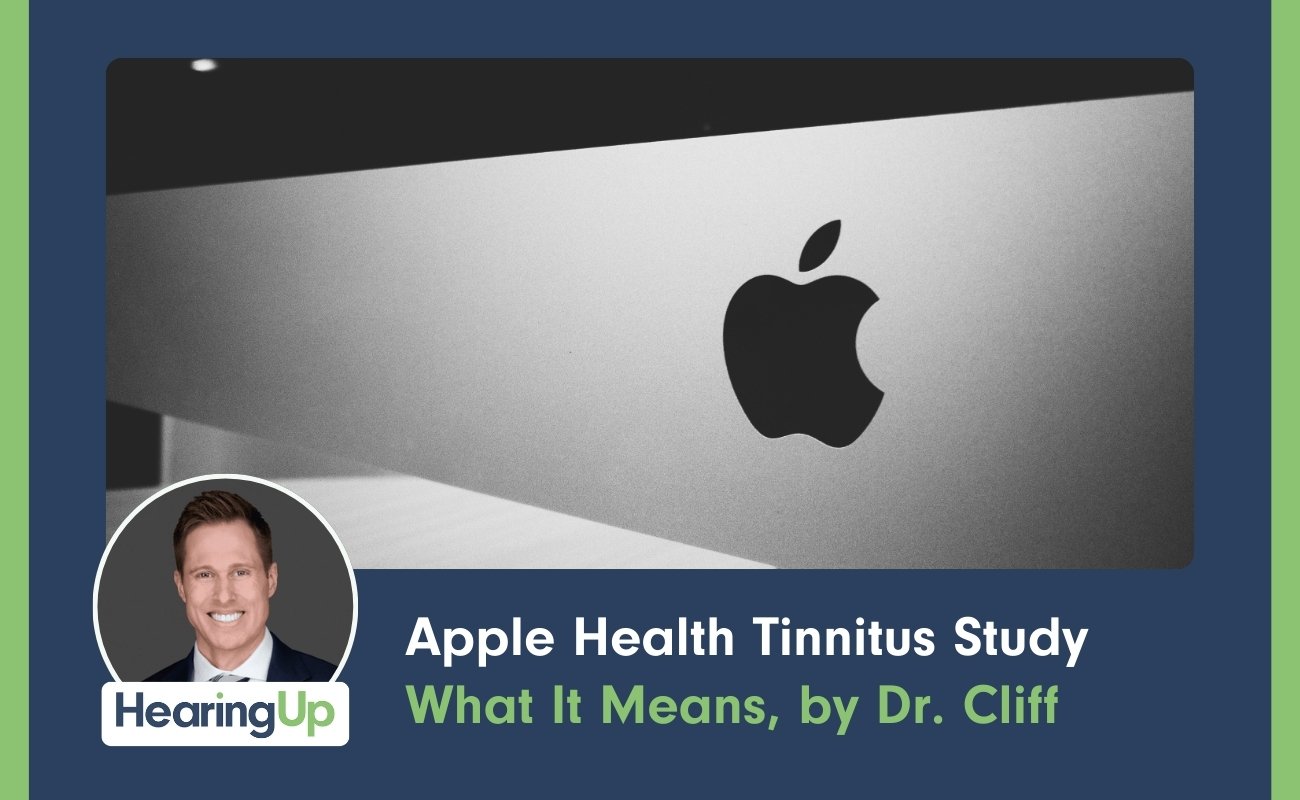The concept of eyeglass hearing aids isn't new. Back in the 1950s and 1960s, these devices were relatively popular, including President Lyndon B. Johnson who wore them for his bilateral sensorineural hearing loss into the 1970s. However, as hearing aids became smaller and more convenient, eyeglass hearing aids fell out of favor and virtually disappeared from the market.
That changed in 2024 when Nuance Audio, in partnership with Essilor Luxottica, received FDA approval for their innovative eyeglass hearing aids. Dr. Cliff Olson recently completed an extensive review of these devices, and the results are fascinating for anyone considering this unique approach to hearing enhancement.
Who Are These Devices For?
The Nuance Audio eyeglass hearing aids are designed for adults with perceived mild to moderate hearing loss. As an over-the-counter hearing aid, they have amplification limitations that make them unsuitable for anything beyond moderate hearing loss levels. These devices are primarily targeted toward individuals who want to hear better in background noise situations, though they can technically be worn throughout the day.
Interestingly, Dr. Cliff's testing suggests that even people with normal hearing could benefit from wearing these glasses in noisy environments due to their advanced directional microphone technology.
Design and Features
The Nuance Audio glasses come in two styles: square and pantos, available in black and burgundy colors. The square design offers two caliber options (54mm and 56mm), while the pantos style comes only in 48mm. The frames cost $1,100, with additional charges for prescription lenses and upgrades potentially bringing the total to around $1,500.
What makes these glasses remarkable is their sophisticated microphone array. Six microphones are strategically placed throughout the frames - two forward-facing microphones on the front rivets, three additional microphones along the bottom of the right temple, and one on the left temple. This configuration creates a powerful directional system that can focus on sounds coming from in front of the wearer while reducing background noise from the sides and rear.
Unlike traditional eyeglass hearing aids that required tubes and custom ear molds, the Nuance Audio glasses use speakers positioned underneath the temples, directly in front of the ears. This design makes the temples slightly thicker than regular glasses but maintains a natural appearance that doesn't immediately identify them as hearing devices.
Performance and Battery Life
The glasses provide up to eight hours of battery life on a single charge, which is impressive compared to many wireless earbuds but may fall short for users who need all-day hearing assistance. The lithium-ion rechargeable batteries are housed within the temples, and the glasses automatically turn off when folded, helping preserve battery life.
A convenient charging pad is included, using USB-C connectivity. The glasses feature Bluetooth Low Energy compatibility with iOS 16 and Android 13 operating systems or higher, though they don't offer traditional Bluetooth streaming capabilities.
App Control and Customization
The Nuance Audio app provides comprehensive control over the glasses' functionality. Users can adjust background noise settings across three levels (lowered, standard, and heightened) and choose from four different presets designed for various hearing loss configurations:
- Preset A: Flat, very mild hearing loss
- Preset B: Normal sloping to mild/moderate high-frequency hearing loss
- Preset C: Mild sloping to moderate high-frequency hearing loss
- Preset D: Flat moderate hearing loss
The app also offers five volume levels and the ability to switch between frontal mode (directional) and all-around mode for different listening situations.
Clinical Testing Results
Dr. Cliff conducted extensive Real Ear Measurement testing to objectively evaluate the glasses' performance. Real Ear Measurements allow audiologists to verify that hearing aids are providing appropriate amplification by measuring sound levels directly in the user's ear canal.
The testing revealed that the Nuance Audio glasses performed best for flat, very mild levels of hearing loss. For anything beyond mild hearing loss, particularly in the high-frequency ranges, the glasses showed significant under-amplification compared to prescriptive targets. This limitation is partly due to the speakers being positioned above the ears rather than inside the ear canals like traditional hearing aids.
However, the directional benefit was impressive, showing a five-decibel improvement for sounds originating from in front of the user compared to sounds from behind, across frequencies from 750 Hz to 6,000 Hz. The noise reduction capabilities also performed well, with the "lowered" setting providing up to five decibels of noise reduction.
Research Support
Published research by Drs. Tami Harel-Arbeli and Douglas Beck, both affiliated with Nuance Audio, found that the glasses achieved up to a 4.4 decibel signal-to-noise ratio improvement. The study also indicated that the Nuance Audio eyeglass hearing aids could outperform prescription hearing aids in noisy settings for mild to moderate levels of hearing loss, primarily due to their superior directional capabilities.
Dr. Cliff's Pros and Cons for
Advantages and Limitations
The primary advantage of these eyeglass hearing aids is their exceptional performance in background noise situations. The large microphone array allows for better directionality than traditional hearing aids, where miniaturization limits microphone spacing. Users also benefit from addressing both vision and hearing needs simultaneously while maintaining a completely discrete appearance.
However, several limitations exist. The most noticeable drawback is the amplified sound of the user's own voice, which can be jarring initially. During Dr. Cliff's testing with fellow audiologists, this was consistently the first complaint. While most users adapt to this within 20-30 minutes to an hour, it represents a significant initial hurdle.
Other limitations mirror those that caused the original decline of eyeglass hearing aids in the 1970s: if either the glasses or hearing aid components break, users lose both vision and hearing assistance simultaneously. The glasses also require removal for charging, and users have limited style and color options.
Professional Fitting Considerations
Since these devices are purchased through optical clinics rather than audiology practices, users won't receive the specialized hearing care expertise that audiologists provide. While optometrists and opticians excel in vision correction, they have limited knowledge about hearing correction. Users experiencing difficulties with the hearing aspects may need to consult with a hearing care professional separately, potentially incurring additional service fees.
An Innovative Solution Worth Considering
Despite some limitations, the Nuance Audio eyeglass hearing aids represent a significant advancement in hearing technology. They successfully combine vision correction with hearing enhancement in a discrete, stylish package that performs exceptionally well in the specific area where most people struggle: hearing in background noise.
For individuals with mild hearing loss who frequently find themselves in noisy environments, these glasses offer a unique solution that addresses both vision and hearing needs simultaneously. While they may not replace traditional hearing aids for those with more significant hearing loss, they fill an important niche in the hearing care market.
Start with a Professional Hearing Evaluation
Whether you're interested in Nuance Audio glasses or more traditional hearing aids, the first step toward better hearing is a comprehensive evaluation. A HearingUp provider can assess your hearing, walk you through your options, and recommend solutions that fit your lifestyle and goals.
HearingUp providers use Real Ear Measurements and follow proven best practices to ensure your devices are fit precisely and perform at their best.
Find a provider near you and take the first step toward hearing more clearly and confidently.



.jpg)




